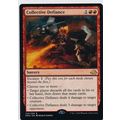Cleeve Abbey, Somerset - 1970s HMSO Postcard
- Condition : Used
- Dispatch : 2 Days
- Brand : None
- ID# : 32349459
- Quantity : 1 item
- Views : 313
- Location : United Kingdom

- Seller : justthebook (+1703)
- Barcode : None
- Start : Sun 10 Oct 2010 17:40:48 (BST)
- Close : Run Until Sold
- Remain : Run Until Sold
More Listings from This Seller view all
Seller's Description
- Postcard
- Picture / Image: Cleeve Abbey, Somerset - gatehouse from south east
- Publisher: Deapartment of the Environment / HMSO
- Postally used: no
- Stamp: n/a
- Postmark(s): n/a
- Sent to: n/a
- Notes & Key words:
------------------------------------------------
Postage & Packing:
UK (incl. IOM, CI & BFPO): 99p
Europe: £1.60
Rest of world (inc. USA etc): £2.75
No additional charges for more than one postcard. You can buy as many postcards from me as you like and you will just pay the fee above once. (If buying postcards with other things such as books, please contact or wait for invoice before paying).
Payment Methods:
UK - PayPal, Cheque (from UK bank) or postal order
Outside UK: PayPal or Google Checkout ONLY please. NO non-UK currency checks or money orders (sorry).
NOTE: All postcards are sent in brand new stiffened envelopes which I have bought for the task. These are specially made to protect postcards and you may be able to re-use them. In addition there are other costs to sending so the above charge is not just for the stamp!
----------------------------------------------
Text from the free encyclopedia WIKIPEDIA may appear below to give a little background information:
*************
Cleeve Abbey is a medieval monastery located near the village of Washford, in Somerset, England. The abbey was founded in the late twelfth century as a house for monks of the austere Cistercian order. Over its 350-year monastic history Cleeve was undistinguished amongst the abbeys of its order, frequently ill-governed and often financially troubled. The sole member of the community to achieve prominence was John Hooper, who became a bishop during the Reformation.
In 1536 Cleeve was closed by Henry VIII in the course of the Dissolution of the Monasteries and the abbey was converted into a country house. Subsequently, the status of the site declined and the abbey was used as farm buildings until the latter half of the nineteenth century when steps were taken to conserve the remains. In the twentieth century Cleeve was taken into state care; the abbey is now looked after by English Heritage and is open to the public. Today Cleeve Abbey is one of the best-preserved medieval Cistercian monastic sites in Britain. While the church is no longer standing, the conventual buildings are still roofed and habitable and contain many features of particular interest including the 'angel' roof in the refectory and the wall paintings in the painted chamber.
...
Work immediately began on constructing the abbey church, a task that took many decades. It was a conservative design, heavily influenced by the thoughts of St. Bernard and the order's early churches in its homeland of Burgundy.[3] It was cruciform in shape with an aisled nave of seven bays, a short, square east end, and transepts each with two side chapels. The eastern parts of the church were built first, and were likely finished in 1232, at which point the abbey received a royal donation of oak to build choir stalls.[2] The remainder was probably completed by mid-century.
To the south of the church a cloister was laid out, surrounded by the domestic buildings of the house. The east range, which was completed first (probably by around 1250),[3] held the chapter house, sacristy, the monks' dormitory, day room, and reredorter (latrine). The south range was built next, it contained the kitchens, warming house and a 19.7 m long refectory which projected south beyond the main body of the building, a classic Cistercian plan. It is suggested from the heraldry used in the tiled floors of the refectory that it was finished at the end of the thirteenth century.[3] The final part to be finished was the small west range, which was used for storage and quarters for the lay brothers. East of the core buildings, and linked to them, was a second cloister around which was the monastic infirmary.
Listing Information
| Listing Type | Gallery Listing |
| Listing ID# | 32349459 |
| Start Time | Sun 10 Oct 2010 17:40:48 (BST) |
| Close Time | Run Until Sold |
| Starting Bid | Fixed Price (no bidding) |
| Item Condition | Used |
| Bids | 0 |
| Views | 313 |
| Dispatch Time | 2 Days |
| Quantity | 1 |
| Location | United Kingdom |
| Auto Extend | No |



 for 1 item(s)
for 1 item(s)
















